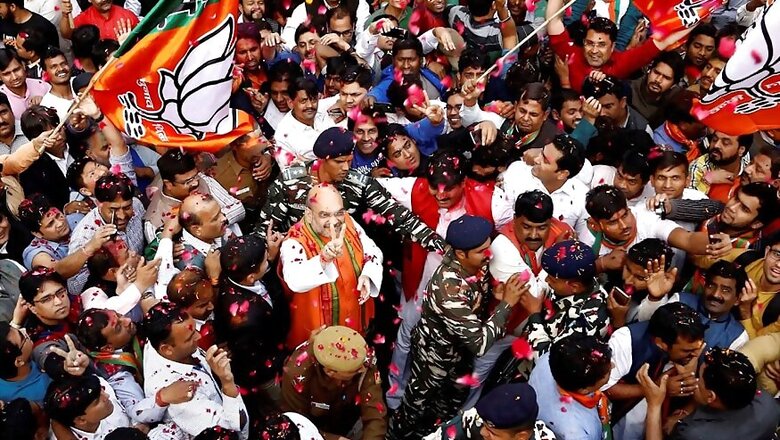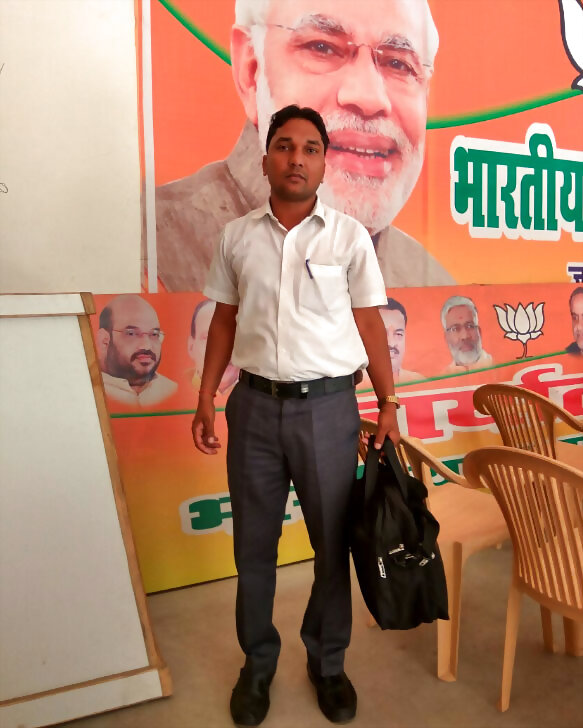
views
New Delhi: In the run-up to Uttar Pradesh elections early this year, BJP president Amit Shah asked a Union minister from the state, who was dropped in the recent reshuffle, to prepare for zila panchayat elections. It was a proposition fraught with risks. The Samajwadi Party was in power and political parties in government tend to have an upper hand in local body polls.
“But then the party president was looking at it as an opportunity to test waters and expand base in the run-up to the high-stake battle in UP,” reminisced the former minister in a chat earlier this year.
Any other BJP president would have probably played it safe. Or even wouldn’t have taken the trouble of managing local body polls. Not Amit Shah.
Under Shah, the BJP is a voracious political animal with an insatiable appetite to expand. It has the hunger to succeed as it aims to replace the Congress as the natural party for governance — both at the Centre and in the states.
Though it is a fact that Shah is building the new-BJP on bedrock laid by millions of anonymous workers who toiled for decades when power was a distant dream. When cadre betrayed an uneasy diffidence about their political preferences; when it would take none less than a senior leader like L K Advani to publically implore karyakartas not to be “apologetic about ideological moorings”.
It no doubts helps to be the President when your party is in power at the Centre with a majority of its own.
But in the last three years, the BJP as a political institution has shown unconventional streaks both within and outside to surprise many of its staunchest adversaries.
It has brought what Congress leader Jairam Ramesh calls an existential crisis for the Grand Old Party. It has mellowed down a rather un-flappable Mani Shankar Aiyer to introspect. Gone is the swagger of January 2014 when he famously predicted that ‘Chaiwala’ Narendra Modi will never be PM in the 21st Century. “But if he wants to distribute tea here, we will find a place for him,” quipped Aiyer.
There is a reason why the opposition in general and Congress as the main protagonist in particular are showing signs of nervousness. Because the BJP as a main pole in the polity under Modi-Shah today is both unpredictable and unsparing. It is a party which is daring to think big. It is aiming to breach frontiers which were hitherto considered beyond reach. And most importantly, it is matching its intentions with rigour and discipline on the ground.
You just have to travel 30 kilometers from the Capital on the National Highway-24 to make sense of it all. On Minakshi Road in downtown Hapur, Shishupal Sagar is the first one to reach the district party office.
He has been handpicked by the BJP and appointed to groom the party for the next general elections in the district which is part of Meerut Lok Sabha constituency. It has a relatively high percentage of Dalit votes.
The 30-year-old bachelor hails from Swar in Rampur district and started his political career as district Scheduled Caste morcha chief of Rampur.
“I used to work as a foreman in a factory by night and do party work during the day. And then I was asked to oversee BJP preparations in Sambhal Assembly segment during Vidhan Sabha polls,” says Shishupal.

File photo of Shishupal Sagar. (Image: Sumit Pande/news18.com)
He will now work fulltime for the party’s expansion till 2019 general elections. “We do not coordinate with anyone else but the top party brass in Lucknow. That is general secretary organisation,” he says. He reports directly to Sunil Bansal, Amit Shah’s close aide currently on deputation from the RSS.
How difficult it is to convince voters, especially Dalits in a milieu when Mayawati’s Bahujan Samaj Party is seen as a natural choice for the community? “Not really,” Shishupal counters. “We lost Sambhal in the last Assembly polls. But we were able to win over a substantial section of Dalit voters in the constituency by sheer tenacity,” he says.
Like Shishupal, there are thousands of such full-time vistaraks who are quietly on deployment across the country, preparing for the next election. Whenever it happens, at whatever level— from nagar panchayat to the Parliament.
This expansion programme is Shah’s brainchild. It is a unique scheme which Shah has brought to the BJP’s regimen. This is his silent army digging trenches for the next big battle.
More than three lakh vistaraks would be fanning out across the country in the next two years to expand the party and prepare for the next big challenge in 2019. 3,70,000 to be precise. A majority will devote a fortnight in a constituency. Some will work full-time for six months. Around 600 poorna-kalik vistaraks will oversee preparations till the next Lok Sabha elections.
For instance, 27-year-old Anmol Saxena is a management graduate who has left his job to work full-time for the BJP. He comes from Chandausi in Western UP and has been assigned to work in Noida Parliamentary constituency. Saxena is the eyes and the ears of the BJP in Noida, operating quietly out of a single room in an outhouse owned by BJP district secretary Yogendra Choudhery in Barola village.
“It is important to segregate organisation from government, now that we are in power in UP,” he says.
Far from dusty lanes of Hindi heartland, Bangalore Central MP PC Mohan was asked to devote at least 15 days for the expansion of the party — to take BJP and its ideology to areas outside his own constituency.
Shah himself is traveling to all provinces this year as a part of this programme. In Amit Shah’s BJP, processes and procedures, schemes and programme are implemented and monitored at all levels. From the grassroots to the top. From Shishupal Sagar and Anmol Saxena to Shah himself.
The concept of vistarak as an instrument of ideological expansion is something which Shah has adapted straight from the RSS’ manual. While pracharaks are full-time workers bound by lifelong vow to celibacy, vistaraks can come from any walk of life — any swayamsewak for that matter, bachelor or married, retired or working — who devote a certain period every year to Sangh.
The flexibility attributed to vistarak thus, vis-a-vis that of a celibate pracharak makes former an ideal model in human resource mobilisation. The emphasis under the program is as much on ideological expansion as it is on booth management.
If recent Assembly polls are anything to go by, mobilisation of miscellaneous votes has been the hallmark of Shah’s strategy in first past the post system. In Uttarakhand for instance, Congress’ vote share increased by a less than 1% as compared to the last Assembly. A close look at final data shows BJP was able to mop up votes from smaller parties to consolidate its position and win a three-forth majority.
For 2019, senior party leaders says BJP is eyeing 120 Lok Sabha seats it lost in 2014 general elections. “There is bound to be some attrition in North, central and western provinces where we have already peaked. The idea is to win new seats to offset losses elsewhere,” says a senior BJP leader.
Special emphasis is on areas where BJP has failed to cross the threshold to convert votes into seats. Shah is looking East, towards Coromandel coasts. In Tamil Nadu BJP is working on a plan to fill in the vacuum created by Jayalalitha’s death. An alliance with a united AIADMK will be better placed to take on DMK-Congress combine. In Kerala, it is aiming to emerge as the main opposition to the Left Front. In Karnataka, a second home run to Siddaramaiah would chock Congress of resources before the next general elections.
Recently, Shah’s surprise nomination to Rajya Sabha has in a way completed the transition of Modi-Shah duo from Gandhinagar to Delhi. In a BJP Parliamentary Party meeting, PM Modi told MPs that leisure days are over. The message was loud and clear to everyone present in the room — from senior ministers to absentee lawmakers who go missing from the Parliament despite repeated reminders. That Amit Shah is here. And he is here to stay.




















Comments
0 comment